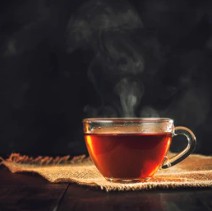The substances in tea that can be dissolved in hot water are called water leachates, substances that can be steeped into the tea broth. The water leachate of Pu'er tea includes tea polyphenols, caffeine, free amino acids, soluble sugars, water-soluble proteins, water-soluble vitamins, water-soluble pectins, inorganic salts, etc. The level of water leachate content reflects the amount of soluble substances and flavoring substances in tea, which is closely related to the soup color, concentration, and taste of tea, and directly affects the taste quality of tea. Therefore, in the tea testing procedure, "water leachate" is a key indicator.

The origin of tea, production process, tea utensils, steeping water, steeping temperature, and steeping method all have an impact on the amount of water leachate in tea. In addition, the water leachate in tea contains a variety of substances, and the amount of water leachate is directly related to the quality of the tea. In tea export inspection, sample analysis, variety identification, etc., water leachate testing is included as a routine analysis project. The international tea market has made a minimum requirement for water leachate, such as not less than 32%.
As a recognized leader in tea testing, Lifeasible strictly follows the SN/T0920-2000 Import and Export Tea Water Leachate Determination Method to test tea water leachate, including principal component analysis, total component analysis, and unknown analysis. We aim to ensure that your tea leachate testing meets international standards. The specific process is as follows:
Water leachate shows a positive correlation with the aroma, soup color, and total internal quality score of tea broth, and measuring water leachate in tea is of great importance. Our laboratory has established a clear and direct method to detect tea water leachate. If you are interested in our solutions, please contact us for technical consultation and quotation.